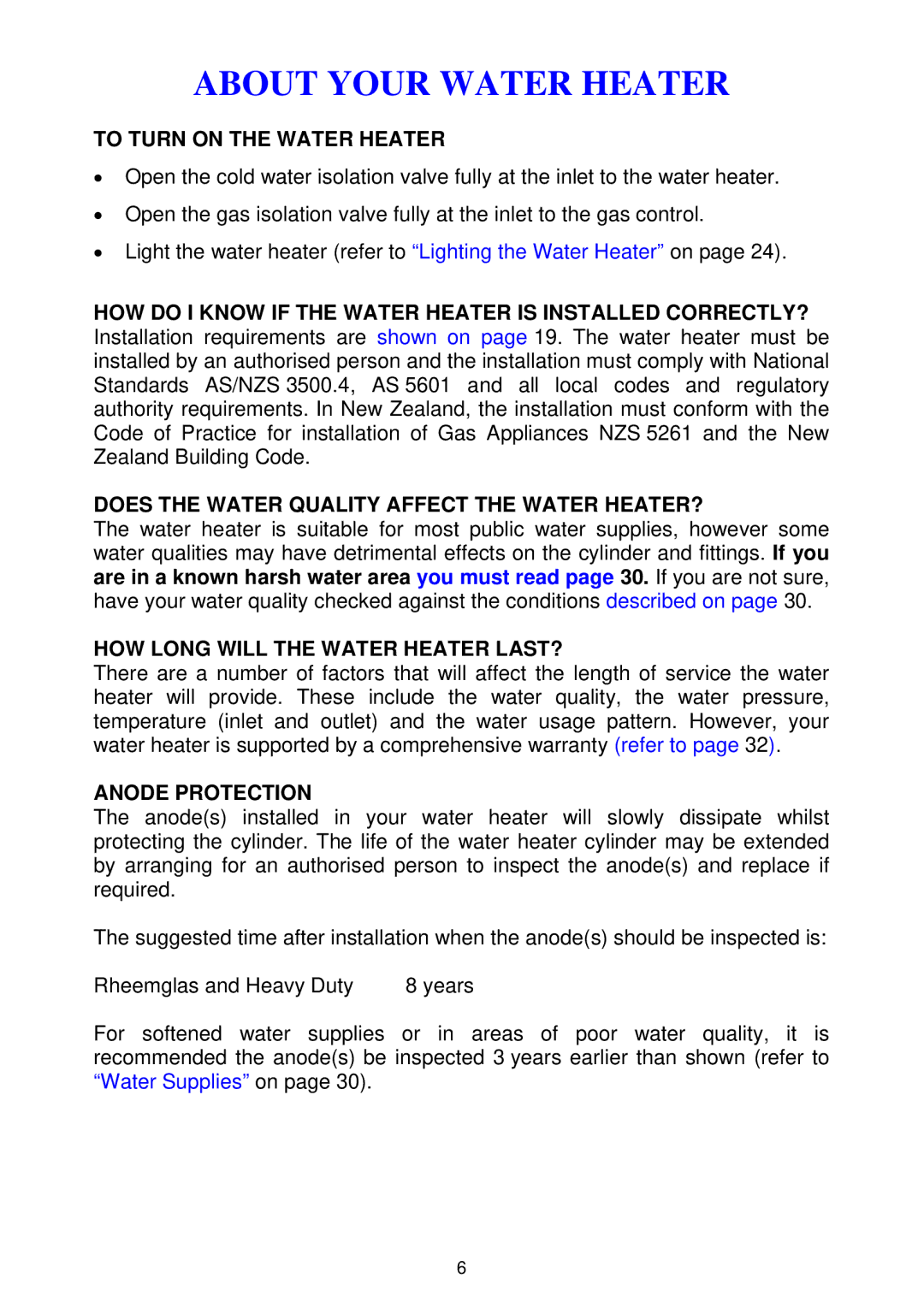ABOUT YOUR WATER HEATER
TO TURN ON THE WATER HEATER
•Open the cold water isolation valve fully at the inlet to the water heater.
•Open the gas isolation valve fully at the inlet to the gas control.
•Light the water heater (refer to “Lighting the Water Heater” on page 24).
HOW DO I KNOW IF THE WATER HEATER IS INSTALLED CORRECTLY? Installation requirements are shown on page 19. The water heater must be installed by an authorised person and the installation must comply with National Standards AS/NZS 3500.4, AS 5601 and all local codes and regulatory authority requirements. In New Zealand, the installation must conform with the Code of Practice for installation of Gas Appliances NZS 5261 and the New Zealand Building Code.
DOES THE WATER QUALITY AFFECT THE WATER HEATER?
The water heater is suitable for most public water supplies, however some water qualities may have detrimental effects on the cylinder and fittings. If you are in a known harsh water area you must read page 30. If you are not sure, have your water quality checked against the conditions described on page 30.
HOW LONG WILL THE WATER HEATER LAST?
There are a number of factors that will affect the length of service the water heater will provide. These include the water quality, the water pressure, temperature (inlet and outlet) and the water usage pattern. However, your water heater is supported by a comprehensive warranty (refer to page 32).
ANODE PROTECTION
The anode(s) installed in your water heater will slowly dissipate whilst protecting the cylinder. The life of the water heater cylinder may be extended by arranging for an authorised person to inspect the anode(s) and replace if required.
The suggested time after installation when the anode(s) should be inspected is:
Rheemglas and Heavy Duty | 8 years |
For softened water supplies or in areas of poor water quality, it is recommended the anode(s) be inspected 3 years earlier than shown (refer to “Water Supplies” on page 30).
6
